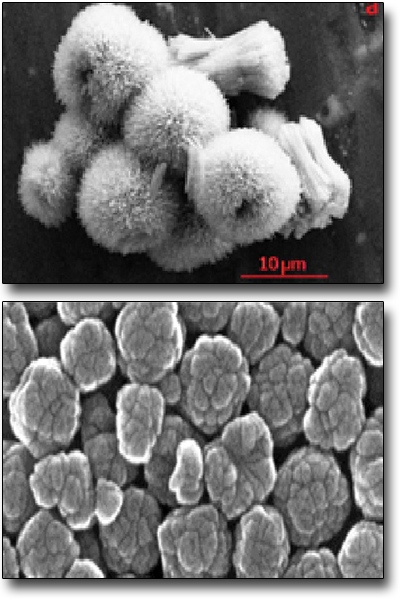The ISM has a consolidated experience for the design and synthesis through chemical and physical methods of multifunctional materials engineered at the nanometer scale with controllable chemical-physical and functional properties (e.g. electronic, magnetic, optical and optoelectronic) of great interest for fundamental studies and applications such as energy, biomedicine, catalysis and photonics.
Processes and approaches followed in synthesis are characterized by techniques such as: i) solid state, hydrothermal, sol-gel and sono-chemical ones which allow the production of nanocomposites and nanohybrids for energy storage and biomedicine; ii) nanochemical and mechanical grinding synthesis for the preparation of metal nanoparticles, magnetic alloys and multifunctional nanocomposites combining nanoparticles and carbon-based materials (CNTs and graphene) which are of interest in different fields such as energy and catalysis; iii) soft chemical synthesis (e.g. co-precipitation and thermal decomposition) for the preparation of magnetic nano-architectures that are formed by magnetic nanoparticles having controlled morphology and core-shell/multi-shell bi-magnetic structures representing elements for superstructures 2D and 3D magnetic and liquid systems (ferrofluids); iv) laser ablation in liquid regarding the chemical free synthesis of colloidal solutions of nanoparticles, which can even be in the form of core-shells structures, of any material (e.g. metals, alloys, oxides and carbides). This green synthesis approach does not need the use of surfactants or specific chemical reagents aiming the application of laser ablation in liquid in catalysts and/or for providing highly pure reagents for being used in chemical and biochemical synthetic routes.
Nanocomposites and nanohybrids synthesis Magnetic Nano-Architecture
Nanochemistry for the synthesis of nanoparticles and nanocomposites Nanoparticles synthesis by Laser Ablation in Liquid


 English (UK)
English (UK)  Italiano (Italia)
Italiano (Italia)